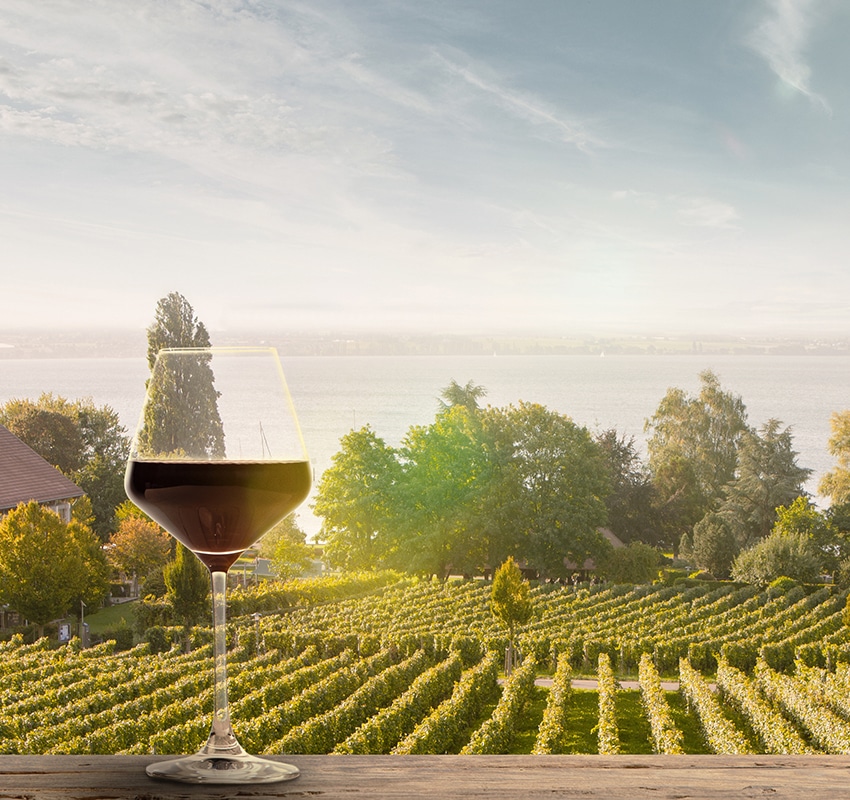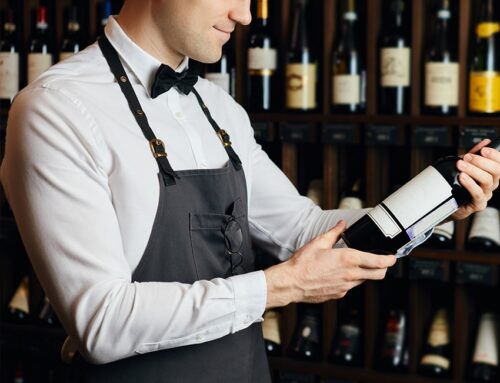How Wine Ads Have Changed Over the Years
Wine advertising has experienced a fascinating evolution throughout history, adapting to changing consumer preferences, market trends, and technological advancements. From the early days of the digital revolution, wine ads have become an integral aspect of the ever-growing wine industry. Each period has offered new techniques of involvement, driven by society conventions and customer expectations. So, let’s embark on a journey through the captivating history of wine advertising and explore how wine ads have changed over the years.
Key Takeaways
- Personalization and user involvement have replaced quality and elegance in wine advertisements.
- Wine marketing imagery has evolved from simple product graphics to luxurious settings and now relatable, casual photographs.
- Instead of merely upper-class people, target audiences now consist of a broader, more diverse population, including millennials.
The Early Days of Wine Advertising
In the early days of wine advertising, the primary focus was on promoting affordability and providing alternatives to champagne. Wine ads often featured images of wine bottles to facilitate product brand recognition in retail environments and encourage consumers to drink wine. As television grew in popularity as a major form of media, the 1950s were an important decade for wine advertising. Prior to television, the majority of wine advertising was limited to print media, mostly magazines and newspapers. Early wine advertisements were frequently trying to inform consumers by emphasizing the “sophistication” and “elegance” that wine consumption brought. TV offered a more dynamic platform, enabling marketers to use images and sound to tell a more engaging story.
The first television wine commercials were a far cry from today’s highly styled versions. They were frequently clear, and focused on the product and its quality. A sommelier may be featured, speaking about the vintage and origin of the wine, accompanied by simple images of a bottle and a glass filled with wine. The intended demographic was primarily middle- to upper-class individuals with a pre-existing interest in wine.
The 1960s saw the emergence of sparkling wine as a modern American obsession. European wine was an expensive luxury item prior to the American Revolution, accessible only to the upper classes. In comparison with other alcoholic beverages, its consumption was relatively low. However, as immigrants with winemaking knowledge migrated west, they helped establish California’s wine industry, attracting wine enthusiasts and laying the foundation for the thriving wine market we see today.
The increased accessibility of wine led to a shift in advertising from emphasizing affordability to highlighting the unique qualities of different wines. This change in strategy significantly shaped the wine industry, helping various wine brands carve out their own niches in the market.
The Rise of American Wine Brands
American wine brands gained popularity in the 20th century for several reasons:
- The increasing popularity of Cabernet Sauvignon
- Investments from Silicon Valley Bank
- The growth of wine tourism in regions like Napa Valley and Sonoma County
These elements aided in the expansion of the American wine industry, a significant player in the wine business.
As a result, wine ads shifted to lifestyle marketing, emphasizing quality and variety of tastes, and implementing targeted marketing campaigns to reach increasingly diverse consumer demographics.
The Shift to Lifestyle Marketing
Wine marketing underwent a significant shift from being product-focused to lifestyle marketing, emphasizing the enjoyment of wine drinking and how it improves social gatherings, and life in general. The goal of this innovative marketing strategy was to establish a stronger connection with customers by appealing to their dream lifestyle and utilizing wine as a representation of refinement, luxury, leisure, or socializing.
The advertising business began to recognize the value of lifestyle marketing. Ads were developed to emphasize lifestyle features rather than only discussing the wine’s attributes or production methods. It shifted from “This is a great wine” to “This wine is for people who enjoy the finer things in life.”
The imagery in these advertisements frequently incorporated luxury settings, such as fine dining restaurants or luxurious homes, subtly portraying the kind of life you could have if you drank that specific kind of wine. Celebrities and influential people were frequently used in these advertisements, giving the appearance that the wine was not only good but also popular among the ‘in-crowd.’
The shift to lifestyle marketing has had a profound impact on wine advertising, targeting not only traditional wine enthusiasts but also younger generations and diverse demographics. This new approach has allowed wine brands to create more engaging and relatable ads, connecting with consumers on a more personal level and solidifying their position in the market.
Lifestyle marketing, which emphasizes the enjoyable experience of drinking wine and its enhancement of other parts of life, has emerged as a powerful weapon for wine advertisers. It allows them to reach new audiences and form stronger emotional ties with customers.
Targeting the Mass Market
As wine grew increasingly popular among a larger spectrum of customers, the target demographic and messaging shifted in the 1990s. Advertisements began to emphasize the accessibility of wine rather than its exclusivity. The message was evident: “Wine is for everyone.”
This was especially true in the United States, where brands like Yellow Tail and Sutter Home tried to reduce the stigma associated with wine. They used bright colors, humor, and even animation in certain circumstances. These labels appealed to a younger, more varied audience by breaking away from traditional wine elitism.
Targeting Younger Generations
Modern wine ads have shifted their focus to target younger generations, addressing competition from hard seltzers and leveraging the power of social media influencers. These wine commercials emphasize lifestyle marketing, focusing on the experience of drinking wine and the social aspects associated with it while featuring younger people in their ads to appeal to a younger demographic.
Social Media Influencers
Social media influencers play a significant role in promoting wine brands to younger audiences. Influencers generate content tailored to their target audience, such as reviews, tutorials, and other engaging material, driving sales and fostering a favorable perception of wine among younger consumers. By leveraging the reach and authenticity of social media influencers, wine brands can effectively target younger demographics and adapt to their changing preferences in the competitive beverage market.
In modern wine advertising, appealing to younger generations has become paramount. Brands have responded to competition from hard seltzers and harnessed the power of social media influencers to maintain their success amid the shifting market landscape.
Sustainable and Eco-Friendly Wine Ads
In response to growing consumer awareness of environmental issues, sustainable and eco-friendly practices are increasingly highlighted in wine advertisements. Wine producers emphasize organic farming, water conservation, and energy efficiency in their ads to attract environmentally conscious consumers and demonstrate their dedication to sustainability.
Wine brands that highlight their commitment to sustainability and eco-friendly practices can attract a wider audience of environmentally conscious consumers. This shift in advertising focus showcases the wine industry’s adaptability and responsiveness to evolving consumer preferences and concerns.
As the importance of sustainability and eco-friendliness grows in the minds of consumers, wine advertisements that emphasize these practices will continue to gain traction, appealing to a wider audience and securing a place for environmentally responsible wine brands in the market.
Role of Terroir and Geography in Modern Wine Ads
Terroir and geography remain important aspects of wine advertising, showcasing the unique qualities of different wine regions. In fact, terroir is either explicitly or implicitly featured in approximately 13% of advertisements over a two-year period, highlighting the significance of these factors in wine marketing.
The concept of terroir originated among French wine growers as early as the 9th century and has since become an integral aspect of wine advertising. By emphasizing the distinctive qualities of a wine produced in a specific region, advertisers can evoke a sense of place and create a deeper connection with consumers who appreciate the unique characteristics of various wine regions.
In addition to terroir, geography plays a crucial role in wine advertising, with ads often mentioning or featuring specific regions, such as:
- California (U.S.)
- Tuscany (Italy)
- Douro (Portugal)
- Veneto (Italy)
By highlighting the unique qualities of these regions, wine advertisers can attract wine enthusiasts who appreciate the nuances of different wine-producing areas.
Modern wine ads continue to emphasize terroir and geography, underscoring the lasting significance of these factors in the wine industry. These ads display the unique qualities of wines from various regions, appealing to consumers who cherish the sense of place and authenticity intrinsic to different wine-producing areas.
Digital Revolution in Wine Advertising
The digital revolution has transformed wine advertising, with brands utilizing online platforms and technology to reach consumers and adapt to their changing preferences. Wine brands have leveraged e-commerce, data-driven marketing, and digital marketing trends to drive traffic to wine-related websites and optimize marketing strategies.
The rise of digital platforms and technologies has enabled wine producers to improve their advertising and connect with consumers in novel and inventive ways. By utilizing digital technologies and online platforms, wine brands can create more engaging and relatable ads, connect with consumers on a deeper level, and reach a broader demographic.
Rise of Social Media Marketing
With the advent of the internet and social media in the early twenty-first century, wine advertising entered a new phase. Instagram, Facebook, and Twitter provided unique chances for customer involvement. The emphasis moved again, but this time towards personalization and user-generated content. Brands began using hashtags and interactive campaigns to engage directly with consumers, encouraging them to share their own wine experiences.
The digital revolution has deeply impacted wine advertising. It has empowered brands to design more targeted campaigns, engage customers in innovative ways, and offer more personalized and interactive experiences. This revolution also provides wine producers with the capability to monitor and assess their campaign success, ensuring they stay competitive in the continuously evolving wine market.
As technology continues to advance, the wine industry will undoubtedly continue to adapt and innovate, leveraging digital platforms and technologies to connect with consumers and remain a relevant and engaging force in the advertising landscape.
Summary
The world of wine advertising has seen a major transformation, from the first television commercials that emphasized quality and sophistication to social media campaigns that promote user participation and sharing. These changes have been in step with advances in technology as well as alterations in societal norms and consumer behavior. One thing is clear as the digital era advances: wine advertising will continue to change as it looks for new methods to appeal to a varied and informed audience.









